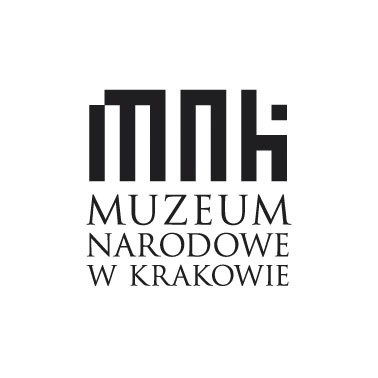
NIEZNANY IMPRESJONIZM \ Manet, Pissarro\ i im współcześni
-
TypSztuki wizualne
-
MiejsceSala Wystaw
-
Godzina g. 12 - 20
-
Data od 9.01.2020
do 29.03.2020 -
Cena 20, 15, 10
Bilety zakupione on-line oraz w kasie CK ZAMEK obowiązują przez cały czas trwania wystawy, czyli do 29.03.2020.
„Nieznany impresjonizm: Manet, Pissarro i im współcześni”. Grafiki z kolekcji Ashmolean Museum w Oksfordzie oraz Muzeum Narodowego w Krakowie.
Kuratorki:
Katherine Wodehouse / Ashmolean Museum, Uniwersytet Oksfordzki
Krystyna Kulig-Janarek / Muzeum Narodowe w Krakowie
9.01.–29.03.2020
wt.-nd. / g. 12-20
Sala Wystaw
bilety: 20 zł (n), 15 zł (u), 10 zł (dla grupy od 15. osób, opiekun wstęp wolny)
Obraz „Impresja: Wschód Słońca” Claude’a Moneta wystawiony w 1874 roku, zainspirował nie tylko cały nurt w historii sztuki, ale także rozpoczął rewolucję w dziedzinie technik artystycznych i w sposobie myślenia o sztuce. Choć sam Monet pozostał wierny malarstwu, to Édouard Manet, Camille Pissarro, Paul Cézanne, Pierre-Auguste Renoir, Berthe Morisot oraz Mary Cassatt zdecydowali się tworzyć także w innych technikach. Ich twórczość graficzna jest w większości nieznana szerszej publiczności, ale stanowi fascynujące przedłużenie oraz dopełnienie ich sławnych dzieł malarskich.
Na wystawie można zobaczyć dwie kolekcje muzealne.
Pierwsza z nich składa się z 34 grafik (akwaforty,
litografie, akwatinty, suchoryty) i należy do najbardziej znaczącego archiwum
impresjonistów poza Francją – Ashmolean Museum w Oksfordzie. Może się ono poszczycić
się niezrównaną kolekcją dzieł m.in. Camille’a Pisarro – szczególnie oddanemu
grafice spośród wszystkich twórców z kręgu impresjonistów. Muzeum pozyskało ją dzięki
darowiznom spadkobierców artysty. Znajdziemy tu charakterystyczne dla
impresjonistów tematy jak: portrety, życie nowoczesnego miasta, krajobrazy i zjawiska
pogodowe. W grafikach, podobnie jak
w obrazach, artyści korzystali z nowatorskich technik i kultywowali estetykę
wykonania.
Druga kolekcja, złożona z 10 prac, to fragment zbiorów nowoczesnej grafiki francuskiej z Muzeum Narodowego w Krakowie, z kolekcji Feliksa Jasieńskiego (1861-1929). Jasieński był miłośnikiem sztuki, muzyki i literatury, podróżnikiem, pisarzem i dziennikarzem, przyjacielem i mecenasem polskich artystów, wreszcie wybitnym kolekcjonerem i największym polskim darczyńcą muzealnym.
Ekspozycja w Centrum Kultury ZAMEK pozwala nie tylko odkrywać prawdziwie modernistyczny charakter tego mniej znanego dorobku impresjonistów, ale ukazuje również twórczość ich poprzedników, którzy jako pierwsi starali się uzyskać „oryginalne” grafiki oraz ich następców. Na wystawie zobaczymy m.in. prace takich autorów jak: Camille Pissarro, Alfred Sisley, Paul Cezanne, Pierre-Auguste Renoir, Henri de Toulouse Lautrec, Édouard Manet, Édouard Vuillard, Pierre Bonnard.
Wystawie towarzyszy program edukacyjny − wykłady, warsztaty, lekcje muzealne, spotkania i oprowadzania. Więcej informacji tutaj
Na zajęciach przedstawimy rozwój technik druku − akwaforty, akwatinty czy suchej igły oraz znaczenie grafiki warsztatowej dla rozwoju impresjonizmu i europejskiej sztuki nowoczesnej. Odpowiemy na pytanie o cel tworzenia druków (w jednym z najbardziej charakterystycznych okresów rozwoju malarstwa europejskiego), które były efektem rodzącego się właśnie szerokiego rynku sztuki oraz druku artystycznego jako formy użytkowej.
Ekspozycja zostanie wzbogacona również o XIX-wieczny warsztat graficzny.
Na wystawę „Nieznany impresjonizm: Manet, Pissarro i im współcześni”
przygotowaliśmy nagrania z audiodeksrypcją dla osób niewidomych
i słabowidzących. Pliki nagrane na MP3 można bezpłatnie wypożyczyć
w zamkowym punkcie informacyjnym lub pobrać je tutaj na własne
urządzenie. Zachęcamy do skorzystania. Nagrania można pobrać tutaj
Organizatorem wystawy są: Ashmolean Museum w Oksfordzie, Muzeum Narodowe w Krakowie, Centrum Kultury ZAMEK oraz Miasto Poznań.
Mecenasem wystawy jest Santander Bank Polska
Lucien Pissarro (1863-1944)
Kobiety pielące trawę, 1894
© Ashmolean Museum, Uniwersytet Oksfordzki / © Ashmolean Museum, University of Oxford














